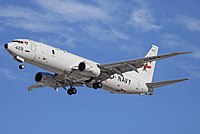
Photo from wikipedia
Head pose estimation (HPE) is a key step in computation and quantification of 3D facial features and has a significant impact on the precision and accuracy of measurements. High-precision HPE… Click to show full abstract
Head pose estimation (HPE) is a key step in computation and quantification of 3D facial features and has a significant impact on the precision and accuracy of measurements. High-precision HPE is the basis for standardized facial data collection and analysis. The Camper’s plane is the standard (baseline) plane commonly used by anthropologists for head and face research, but there is no research on automatic positioning of the Camper’s plane using color and depth cameras. This paper presents a high-accuracy method for Camper’s plane localization and HPE based on multi-view RGBD depth sensors. The 3D facial point clouds acquired by the multi-view RGBD depth sensors are aligned to obtain a complete 3D face. Keypoint RCNN is used for facial keypoint detection to obtain facial landmarks. A method is proposed to build a general face datum model based on a self-built dataset. The head pose is estimated by applying rigid body transformation to an individual 3D face and the general 3D face model. In order to verify the accuracy of Camper’s plane localization and HPE, 102 cases of 3D facial data and experiments were collected and conducted. The tragus and nasal alar points are localized to within 7 pixels (about 0.83 cm) and the average accuracy of the three dimensions of Camper’s plane identified is 0.87°, 0.64° and 0.47° respectively. The average accuracies of the three dimensions of HPE were 1.17°, 0.90° and 0.97. The experiment results demonstrate the effectiveness of the method for Camper’s plane localization and HPE.
Journal Title: IEEE Access
Year Published: 2022
Link to full text (if available)
Share on Social Media: Sign Up to like & get
recommendations!